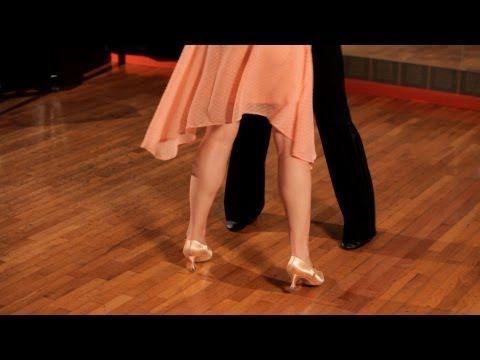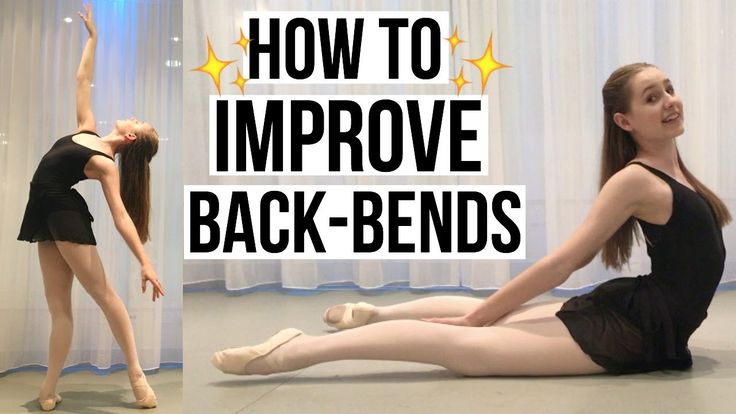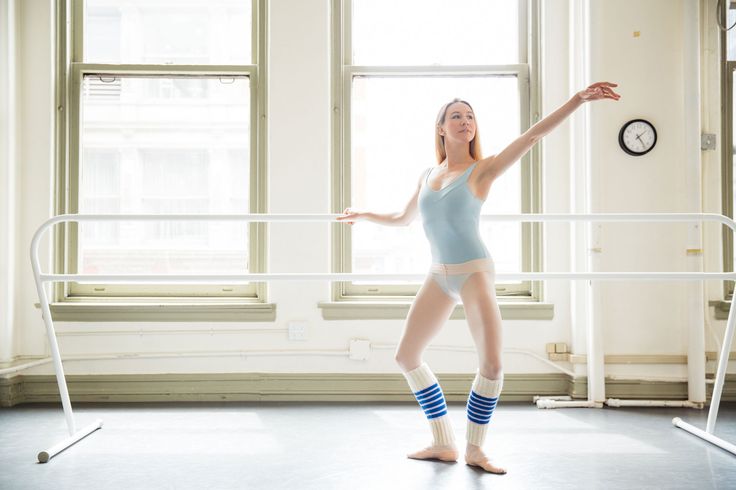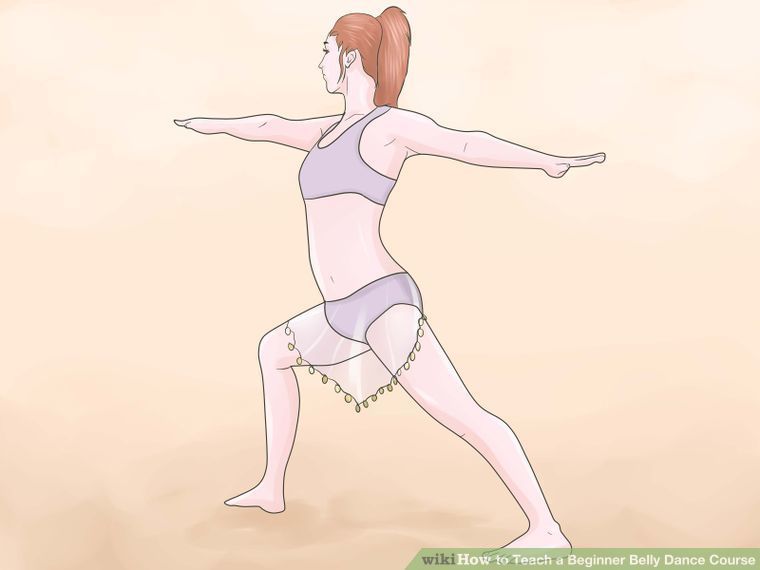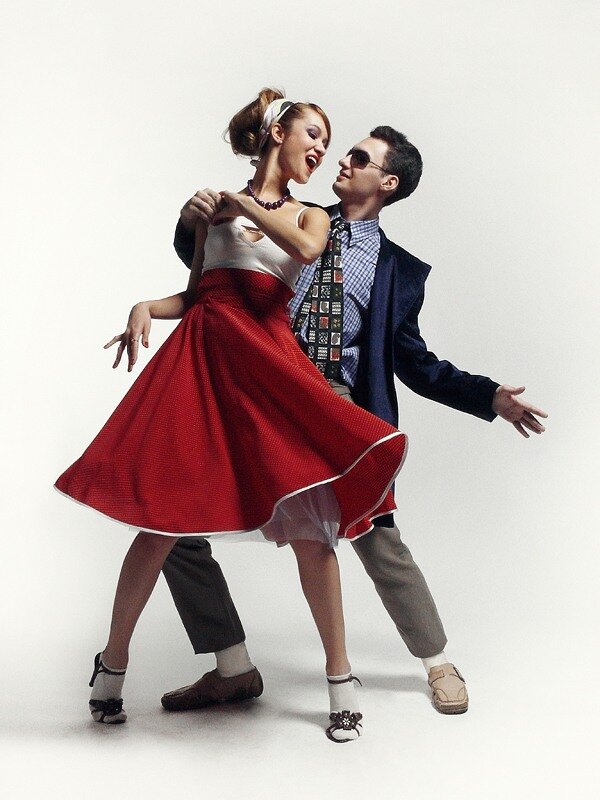How to dance slow foxtrot
Learn Basic Foxtrot Steps
Foxtrot is a smooth, elegant, easy to learn dance, very popular at wide variety of social events, including wedding receptions. It's one of the most beautiful ballroom dances characterized by long, flowing movements.
- Basic steps
- Instructions & Diagrams
- Video
- Recommended Video Lessons »
Quick intro
Foxtrot is named after its originator, Harry Fox, who was a Vaudeville performer in New York in the 1910s. Because he was having a hard time finding female dancers capable of performing the difficult two-step, he added trotting steps to ragtime music. People soon referred to his dance as Fox's Trot.
Foxtrot includes basic elements found in most other dances, so when you learn it you acquire a good foundation to learn other popular dance forms. It is highly versatile and can be danced to a variety of musical styles and tempos. From slow and romantic to quick and jazzy. Popular vocalists for foxtrot include Frank Sinatra, Bobby Darin, Billie Holiday, Nat King Cole, Ella Fitzgerald, Louis Armstrong, Dinah Shore, and many, many more.
Basic steps
The basic elements of foxtrot are walking steps and side steps. The long walking movements also involve a rise & fall action, which is similar to waltz, although more subtle. The basic box step is also similar to waltz steps – the main difference being timing (foxtrot is 4/4, waltz is 3/4). If you already know how to waltz, then learning foxtrot will be just a matter of rhythm.
The basic rhythm is slow, slow, quick, quick. The slow steps use 2 beats of music and the quick steps use one. The slow steps are long and elegant, and the quick steps are short and energetic. As already mentioned, the music is played in 4/4 timing.
Foxtrot is danced in a normal closed position, which means facing your partner and holding them close.
Instructions & Diagrams:
Stand upright with your feet together. Face each other, lady puts her right hand in his left. His right hand is on her left shoulder blade, her left hand is on his right arm.
Basic Steps - Gentleman
Basic forward
- Step forward with your left foot (slow step)
- Step forward with your right foot (slow step)
- Sidestep to the left with your left foot (quick step)
- Move your right foot to your left foot (quick step)
Basic backward
- Step backward with your left foot (slow step)
- Step backward with your right foot (slow step)
- Sidestep to the left with your left foot (quick step)
- Move your right foot to your left foot (quick step)
Basic Steps – Lady
Basic forward
- Step backward with your right foot (slow step)
- Step backward with your left foot (slow step)
- Sidestep to the right with your right foot (quick step)
- Move your left foot to your right foot (quick step)
Basic backward
- Step forward with your right foot (slow step)
- Step forward with your left foot (slow step)
- Sidestep to the right with your right foot (quick step)
- Move your left foot to your right foot (quick step)
Video
In the following video Leon and Kim will show you the basic forward. You will also learn how to achieve smoothness in your movements:
You will also learn how to achieve smoothness in your movements:
more videos »
Now that you know basic forward, try doing basic backward. It's the same thing, only that you move... backwards (from the perspective of the leader). And then you can mix the two together.
Ok, so now that you've mastered the basic step, lets do something a bit different. In the next video (from Learn & Master Ballroom Dance) you will learn the Left Turning Box. Timing will change here to slow, quick, quick instead of the basic slow, slow, quick, quick.
Where to go next?
When you're ready for more, check out the recommended video lessons. With a good video training program, you can quickly rise to the next level.
How to dance Slow Foxtrot
Some sources say Slow Foxtrot was named by a vaudeville performer Harry Fox in 1914. According to others, the name of the Foxtrot dance, which means “fox walk”, “fox’s trot” was given for a special style and manner of performance. Since only foxes supposedly have an unusual gait among animals when the legs are put in one line (next to the next).
Learn more about Slow Foxtrot and Ballroom dancing.
- What is Slow Foxtrot
- History of Slow Foxtrot
- Training options to learn Slow Foxtrot
- Course for Slow Foxtrot at Palais de Danse
- Competitions
- Videos
Palais de Danse ProAm Couple in beautiful Slow Foxtrot positionWhat is Slow Foxtrot?
Just thinking about the Slow Foxtrot, the velvety voice of the inimitable Andy Williams begins to sound in my head. His imperishable hits forever entered the compilation of the best songs for one of the brightest, extravagant and gentle at the same time dances.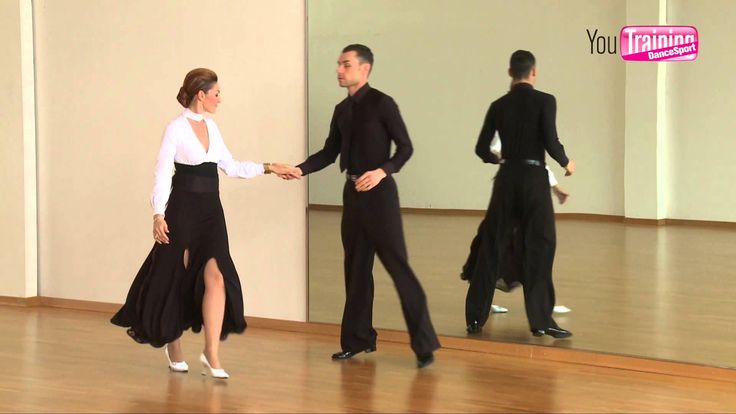 Foxtrot combines the spirit of the jazz era of America of the 1920s and the atmosphere of European balls.
Foxtrot combines the spirit of the jazz era of America of the 1920s and the atmosphere of European balls.
This is a dream dance! The dream of everyone who wants to master the ease, freedom of movement in a crowded room, a kind of dribbling, and incredible maneuverability. Continuous, smooth forward movement, sliding steps, lightness.
Slow Foxtrot is composed of fairly simple walking steps and is not difficult to learn how to dance.
History of Slow Foxtrot
Some sources say Slow Foxtrot was named by a vaudeville performer Harry Fox in 1914. According to others, the name of the Foxtrot dance, which means “fox walk”, “fox’s trot” was given for a special style and manner of performance. Since only foxes supposedly have an unusual gait among animals when the legs are put in one line (next to the next).
Training options for Slow Foxtrot
- Group dance lessons- (please, see our Group training schedule) or create your own Private group of friends, choose your own time and day.
- Private dance classes- one on one with the Instructor.
- Main Ballroom or separate cozy studio for private sessions and small groups.
Course Info for Slow Foxtrot
There are the following Levels of dancing, defining proficiency levels, you can choose from based on your current dance skills:
- Beginner Viennese Waltz
- Bronze Viennese Waltz
- Silver Viennese Waltz
- Gold Viennese Waltz
- Scholarship Viennese Waltz
Each Level consists of different syllabus figures, which provide a training framework for the dancer. One does Bronze, then Silver, then Gold, and then the most advanced Level Scholarship.
Your skill level of dancing will increase the more you participate in training and practice the DanceSport.
Competitions for Slow Foxtrot and Ballroom dancing
You can simply enjoy dancing and get fit or take it to a higher level and take part in International and local UAE Dance Competitions.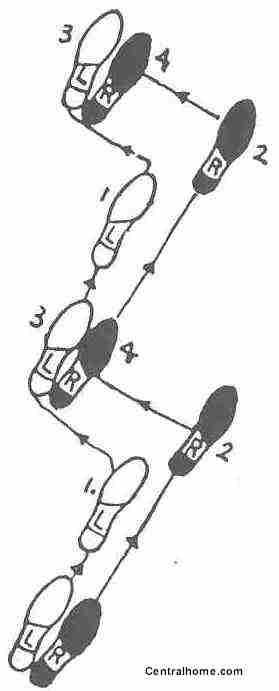
You can participate with your dance partner or enter a dance competition with your instructor.
Instructors for Slow Foxtrot:
All our Dance trainers are award winners in their home countries, specialists in 10 dances of International European dance program and other forms of Dance, will guide you through a variety of Dance styles and bring to the heights of the dancing skills.
- Mariia Proskurnina
- Anton Lenytskyi
- Vladyslav Kudin
- Olesia Bilous
To raise your dancing level to an even higher standard,- take part in dance workshops taught by top professionals in Ballroom dancing. At Palais de Danse dance studio you will have the opportunity to work with dance legends such as Nataliya Koliada, Stas Portanenko, Tony and Amanda Dokman.
Similar Posts | About Ballroom dancing
Dance classes for kids in Dubai, UAE
In dance classes, children develop grace and their own unique style. An ideal sport and recreational activity is a combination of art and sports.
An ideal sport and recreational activity is a combination of art and sports.
learn more about ballroom dancing
read more
What type of dance is best for beginners?
Dance is the rhythmic movement of the body, usually in harmony with the music and in a limited space with the aim of expressing ideas or emotions, releasing energy, or simply enjoying the movement itself. Dance seems to be one of the oldest arts, and it is present in virtually every culture in the world. Dance motifs can be a ritual, ceremonial, liturgical, magical, theatrical, social, aesthetic…
learn more about ballroom dancing
read more
How to dance Quickstep
Quickstep is a modern dance, it can be called the “dance of joy”, because its main figures are quite simple, and the tempo of the music and the mood of the dance seems to be inviting to a carefree interpretation of its bright rhythm. Beginners will see how easy it is to learn its basic steps and how simply they fit the music. The advanced dancer will discover that the music lends itself to an infinite variety of steps.Quickstep dancers are energetic and fast while appearing extremely light on their feet. It should appear that the feet of the dancers barely touch the ground.
The advanced dancer will discover that the music lends itself to an infinite variety of steps.Quickstep dancers are energetic and fast while appearing extremely light on their feet. It should appear that the feet of the dancers barely touch the ground.
learn more about ballroom dancing
read more
Foxtrot. Dance technique SLOW FOXTROT for beginners
Dance - Foxtrot. Dance technique SLOW FOXTROT for beginners| HOUSE | MENU | DOKI | SEARCH |
Culture › Dance › European ›
see Recommended literature on dance. Designations and abbreviations
(from English foxtrot - fox step), American ballroom dance , however, having a distant relation to the fox, since it is named after the American actor Harry Fox, who invented this dance in 1914. His characteristic manner of moving was called Fox`s Trot.
In the beginning, the foxtrot was not a very restrained dance with many jumps and leg swings - after all, it was created for the variety show stage. It was danced at a different pace - from 32 to 50 t/min. But once in England, he underwent a real reform and acquired two options: more than fast (quick step) and over slow (slow fox).
It was danced at a different pace - from 32 to 50 t/min. But once in England, he underwent a real reform and acquired two options: more than fast (quick step) and over slow (slow fox).
In the 1920s world champion Frank Ford refined the basic movements of the foxtrot. The foxtrot technique is somewhat reminiscent of a slow waltz, but the movements are performed in a completely different rhythm.
One of the features and difficulties of the foxtrot is that the end of many of its movements does not coincide with the end of measure of music, i.e. the movement often ends within the measure. In addition, the last step of the previous figure can simultaneously be the first step of the next one. The stride length will depend on the pace. The faster you move, the shorter the steps.
Slow Foxtrot
(or slow fox, from English slow fox), one of the forms of foxtrot , music.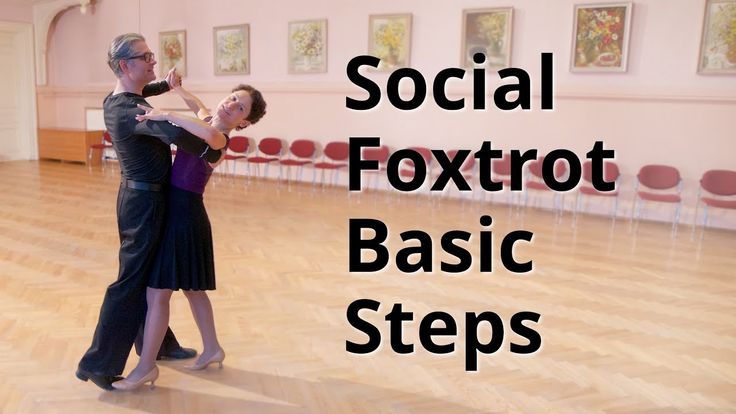 size 4/4, rate 28-30 t/min. (112-120 bpm). Included in Western European program ballroom dancing . A dance of strict lines and at the same time allowing you to improvise, changing the combination of movements and their sequence. Foxtrot is a restrained and elegant dance.
size 4/4, rate 28-30 t/min. (112-120 bpm). Included in Western European program ballroom dancing . A dance of strict lines and at the same time allowing you to improvise, changing the combination of movements and their sequence. Foxtrot is a restrained and elegant dance.
It reached its popularity in the 40s. 20th century Melodies written by Frank Sinatra, Glenn Miller and other musicians have become real classics. The steps of the dance are long, smooth, sliding. The performance of the slow foxtrot is considered quite difficult - the dancers are required to have good balance and constant control over each movement.
Fast Foxtrot
(or quick step, from the English. quick step - quick step), one of the forms foxtrot , music. size 4/4, rate 48-52 t/min. (192-208 bpm). Included in Western European program ballroom dancing . The most dynamic of the "standard" dances. He grew up from the foxtrot, which was danced in the American music hall. Once in England, the dance acquired two versions: faster (quick step) and slower (slow fox). The British upgraded the original charleston , providing it with characteristic foxtrot movements. The result was a dance of fast steps, which included both the main pas of the slow foxtrot and the fast figures brought in from outside .
Once in England, the dance acquired two versions: faster (quick step) and slower (slow fox). The British upgraded the original charleston , providing it with characteristic foxtrot movements. The result was a dance of fast steps, which included both the main pas of the slow foxtrot and the fast figures brought in from outside .
Quick-step is a mobile and impetuous dance in character. Here are light small jumps, and swift and energetic steps, and sudden stops with pauses. And all this is fun, carefree and harmonious. A fairly fast pace of the dance requires good command of all the figures and coherence in a pair.
SLOW FOXTROT dance technique for beginners
This dance is considered difficult because it requires good balance and constant control of every movement. To perform it gracefully, the partner and especially the partner need a long training. Beginners usually prefer the blues, which is erroneously called the slow foxtrot. However, those who from the very beginning want to overcome all difficulties will get real pleasure moving around the dance floor in a foxtrot. Do not forget that the slow foxtrot requires a lot of space, and in a small and couple-filled area it should be abandoned.
However, those who from the very beginning want to overcome all difficulties will get real pleasure moving around the dance floor in a foxtrot. Do not forget that the slow foxtrot requires a lot of space, and in a small and couple-filled area it should be abandoned.
Size: 4/4. Tempo: 30 bars or 120 beats per minute.
Basic rhythm: slow, slow, fast, fast, slow; the first and third shares are accentuated; each slow count is equal to two beats, and each fast count is equal to one beat. Position: identical to the position of the quickstep.
1. Triple step
The march and triple step are the basis of the slow foxtrot. Each step of the march counts as "slow" - Two beats. The difficulty of the slow foxtrot is to follow the steps on the "fast" count without speeding up and not take too long on the "slow" count. The triple step starts facing along the line of dance and ends in the same direction.
For Partner:
1.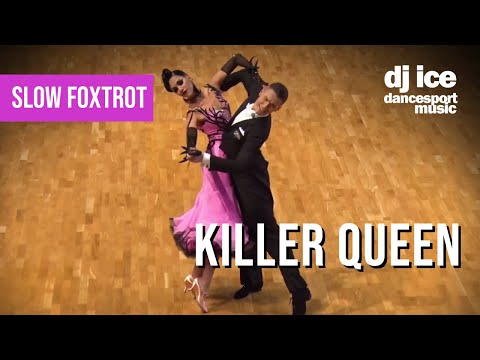 Step right foot forward (quickly).
Step right foot forward (quickly).
2. Step left foot forward, sliding along the right foot (quickly).
3. Step right foot forward, sliding along the left foot (slowly).
For Partner:
Performs opposite steps.
Fig. Triple step. The partner performs from the right foot forward, the partner from the left foot back
2. Pen pitch
The movement consists of a slow step and a triple step in which the partner walks on the side of the lady in the second fast step. This figure serves as a link.
For Partner:
Starts and ends the movement facing the line of dance diagonally to the wall or diagonally to the center.
1. Step right foot forward, turning the body slightly to the right (slowly).
2. Step forward with the left foot, getting ready to walk at the lady's side; the left shoulder is leading (quickly).
3. Step forward with the right foot to the lady's side (quickly).
4. Step left foot forward in a closed position in line with the partner, body along the line of dance (slowly).
For Partner:
Performs opposite steps.
Move your feet following the movement of the “brush”.
MPC by 1, 4. PADC by 3. Rise at the end 1, up by 2, 3. Decrease at the end 3. Tilt to the right by 2, 3. No turn, but there is a leading left shoulder by 2, 3. At the third step on the side of the partner, keep her straight in front of you and close so as not to lose contact {note. specialist. ed.).
Fig. Feather step. Pa of a partner and a partner who performs opposite steps without retreating from a partner
3. Visk
A slight change of direction makes the dance more enjoyable. This is achieved by using a classic whisk. The whisk can be combined with the feather step (see above), the last step of which is the first whisk step (slow, fast, fast).
For Partner:
Starts facing along the line of dance and ends facing diagonally to the wall in promenade position.
1. Step left foot forward along the line of dance (slowly).
2. Step with the right foot to the side, crossing the line of dance with the body turning slightly to the left; move the partner to the promenade position (quickly).
3. Cross the left leg loosely behind the right, keeping the promenade position facing diagonally to the wall (quickly).
MPC slightly by 1. Rise at the end of 1, up by 2, 3. Decrease at the end of 3. Tilt to the left by 2, 3.
Temple tie with a step "feather", starting with the right foot.
Fig. Visk. Pa partner and partner
For Partner:
Starts moving backwards along the line of dance and ends up facing diagonally to the center (new direction) in promenade position.
1. Step right foot back, back along the line of dance (slowly).
2. Step left foot back and to the side with a slight turn of the body to the right - promenade position (quickly).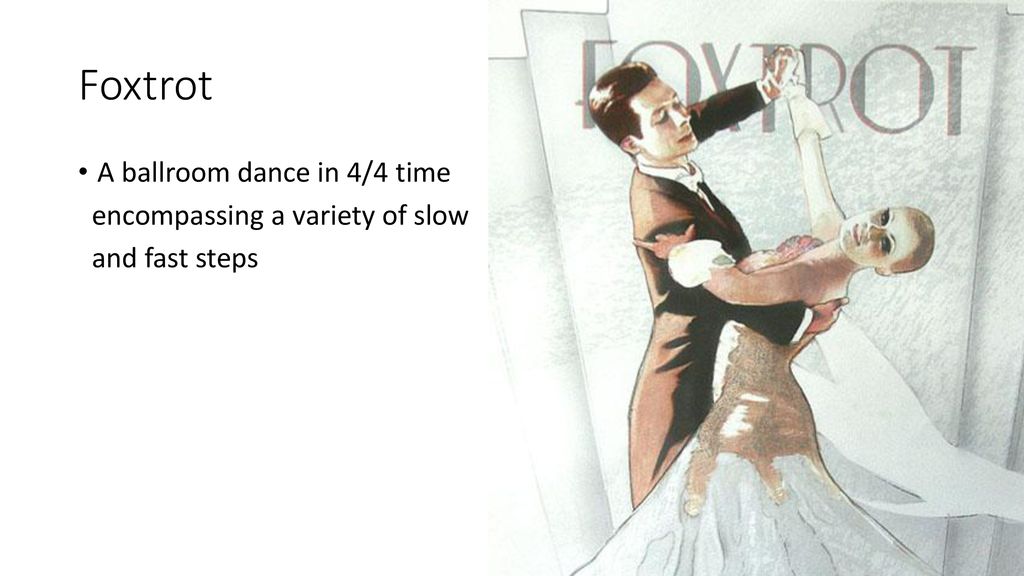
3. Cross the right leg loosely behind the left, keeping the promenade position, facing diagonally to the center (new line of dance - fast).
In order to link the temple with the feather step, the partner takes the starting position with her back along the line of dance on the first quick count of the feather step.
Advanced SLOW FOXTROT dance technique
The dance is distinguished by the length of the steps, which require ease of movement and perfect balance. Variations of the slow foxtrot are possible only on a large venue, so on small venues they are replaced with quickstep steps, dancing more slowly. However, even on a small dance floor, an experienced dancer will be able to use a few suitable moves, provided that there are few dancers and the partner dances well.
Basic foxtrot figures: triple step, feather step, right and left turns, impetus turn, telemark. Among the standardized variations are: telemark to the right, “hovering” (hover) telemark to the right, right spin-turn, top spin.
It is very important for beginners to correctly execute the triple step. In order to dance the slow foxtrot with ease and grace, even trained dancers need to master a few preparatory exercises. Preliminary preparation is especially necessary for the partner. This applies, for example, to a step back, which is unusual and therefore very difficult to perform. First of all, we give an exercise for walking without music, and then with musical accompaniment. You should start straight along the line of dance, without turning.
For Partner:
1. Step right foot forward (slowly).
2. Step left foot forward (slowly).
3. Triple step - right, left, right foot (fast, fast, slow).
4. Step left foot forward (slowly).
5. Step right foot forward (slowly).
6. Triple step - left, right, left foot (fast, fast, slow).
Performing the triple step 3 and 6, rise at the end of the first step, up on the second, lower at the end of the second step {note. specialist. ed.).
Repeat as desired.
For Partner:
1. Step back with the left foot (slowly).
2. Step right foot back (slowly).
3. Triple step - left, right, left foot (fast, fast, slow).
4. Step right foot back (slowly).
5. Step back with the left foot (slowly).
6. Triple step - right, left, right foot (fast, fast, slow).
When stepping back, the heel must be in contact with the floor.
Repeat as desired.
In links, each figure's own rhythm overlaps, and often the last step of one becomes the first step of another. Ultimately, this is what distinguishes a good dancer: his slow should be seamless, pleasant for both the performer and the audience, causing them to associate with figure skating.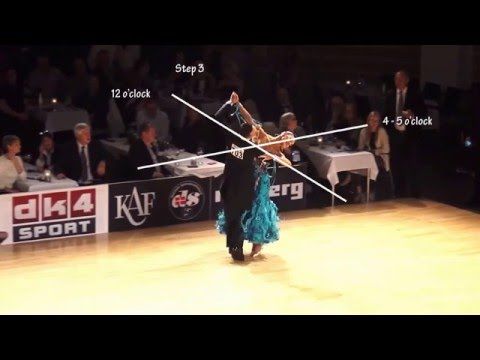 Here are examples of links.
Here are examples of links.
Rhythm of separate figures
Feather step: slow, fast, fast, slow. Triple step: fast, fast, slow. Right turn: slow, fast, fast, slow, slow.
Therefore, the last step of the triple step becomes the first step of the right turn.
1. Right turn
The movement can be performed at the corner of the court or moving along its edge.
For Partner:
Starts to move facing in line of dance or diagonally to the wall; ends facing diagonally to the center or in the direction of the new line of dance.
1. Step forward with the right foot turning the body to the right (slowly).
2. Step left foot to the side to the left, crossing the line of dance (quickly).
3. Continuing to turn on the ball of the left foot, step back with the right foot, back along the line of dance (quickly).
4. Step with the left foot back along the line of dance with the body turning to the right (slowly).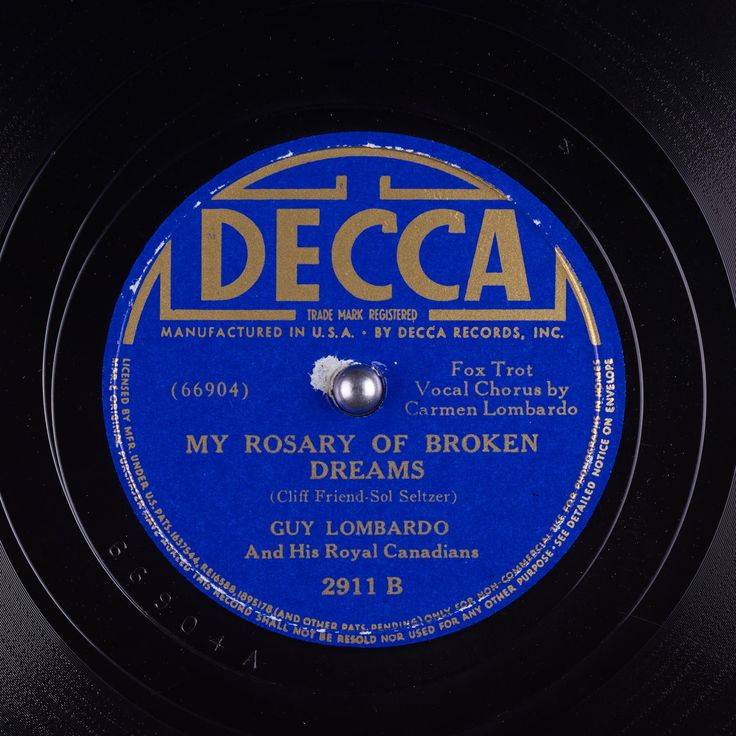
5. Take the right foot back (with pressure on it), continuing to turn on the left heel. Finishing the movement, put the right foot parallel to the left at a distance of about 15 cm; body weight on the right leg (slowly).
6. Step forward with the left foot turning the body to the left (slowly).
Continue the impetus turn after point 3 of the right turn
or "flying" telemark after point 5.
For Partner:
1. Step back with the left foot turning the body to the right (slowly).
2. Putting the right foot to the left, continue turning on the left heel to the right - heel turn; finish the movement of the face along the line of dance, body weight on the right leg (quickly).
3. Step left foot forward (quickly).
4. Step right foot forward along the line of dance with the body turning to the right (slowly).
5. Step left foot to the side to the left, crossing the line of dance (slowly).
6. With the movement of the “brush” (brush), move the right foot past the left and take a step back with it, turning the body to the left (slowly).
Fig. Right turn. Pa partner and partner
This figure is difficult for the partner, as it involves a turn on the heels and a brush on the feet. On paragraph 4, the partner should relax her right knee well and perform paragraph 5 slowly. At point 6, the knees should be relaxed and the “brush” movement should be performed with the plane of the right foot sliding along the left.
MPC by 1, 4, 6. Rise at the end of 1, top by 2, 3. Decrease at the end of 3. Tilt to the left by 2, 3, to the right - by 5 (for the partner), for the partner - vice versa. 1/2 turn for 1-3, 3/8 turn between 4-6. On the third step (for the partner), the hips are directed forward.
2. Rapid turn (impetus turn)
This very popular quickstep figure is often used in other dances. It can be performed at the corner of the site or moving along it. The figure is executed after the first three movements of the right turn, followed by the last part of the left turn.
It can be performed at the corner of the site or moving along it. The figure is executed after the first three movements of the right turn, followed by the last part of the left turn.
For Partner:
Starts moving with the back along the line of dance and ends with the back diagonally to the center.
1.2.3. right turn (slow, fast, fast). Then back along the line of dance:
1. Step with the left foot back along the line of dance with the body turning to the right (slowly).
2. Bring the right foot to the left, turning on the left heel, body weight on the right foot (quickly).
3. Continuing to turn on the ball of the right foot, take a step with the left foot to the side to the left and slightly back (quickly).
4. Step right foot back diagonally to the center with the body turning to the left (slowly).
Continue points 5, 6, 7 of the left turn. Finish diagonally to the center or, if the movement is performed on a corner, diagonally to the wall - a new line of dance (fast, fast, slow).
For Partner:
1. Step right foot forward along the line of dance with the body turning to the right (slowly).
Fig. Impetus-turn. Pa partner and partner
2. Step left foot to the side to the left, crossing the line of dance (quickly).
3. Continuing to turn on the ball of the left foot, make a brush with the feet and take a small step forward diagonally to the center with the right foot (slowly).
4. Step left foot forward diagonally to the center, turning to the left (slowly).
Continue steps 5, 6, 7 of the left turn (fast, fast, slow).
MPC by 1, 4. Rise at the end of 2, top by 3. Decrease at the end of 3. Tilt at the partner to the left, at the lady to the right by 2. Perform 3/8 turn to the right on the first two steps, another 1/4 turn between 2 , 3. Then 1/4 turn to the left between steps 4-7.
3. Telemark
This variation is more commonly used in small venues and can replace a reverse turn.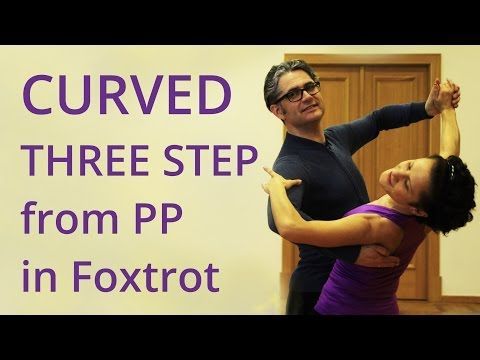 It is usually preceded and followed by a "feather" step that starts on the partner's side.
It is usually preceded and followed by a "feather" step that starts on the partner's side.
For Partner:
Starts moving diagonally towards the center and ends diagonally towards the wall.
1. Step forward with the left foot, turning the body to the left (slowly).
2. Step right foot to the side to the right, crossing the line of dance (quickly).
3. Continuing to turn on the ball of the right foot, take a step with the left foot to the side to the left and slightly forward, ending with the face diagonally to the wall (quickly).
4. Step right foot forward facing diagonally to partner's side wall (slowly).
Finish the movement by performing steps 2, 3, 4 of the “feather” step facing diagonally to the wall (fast, fast, slow).
For Partner:
1. Step back with the right foot, turning the body to the left (slowly).
Fig. Telemark. Pa partner and partner
2. Bring the left foot to the right, turning on the right heel; finish facing along the line of dance, transferring body weight to the left leg (quickly).
Bring the left foot to the right, turning on the right heel; finish facing along the line of dance, transferring body weight to the left leg (quickly).
3. Continuing to turn on the ball of the left foot, take a step with the right foot to the side to the right and slightly back, ending with the back diagonally to the wall (quickly).
4. Step left foot back diagonally to the wall, partner on the side (slowly).
Finish the movement by performing steps 2, 3, 4 of the “feather” step with your back diagonally to the wall (fast, fast, slow).
PDK for 1, 4. The fourth step in PDK. Rise at the end 1, up by 2, 3. Decrease at the end 3. Tilt the partner to the left, the lady to the right by 2, 3. Perform 3/4 turns between 1-4, the body turns a little less. For the partner, the third step should be long so as not to move away from the partner.
4. Open telemark ending with pen step
In the telemark variation, the third and fourth steps are performed in promenade position.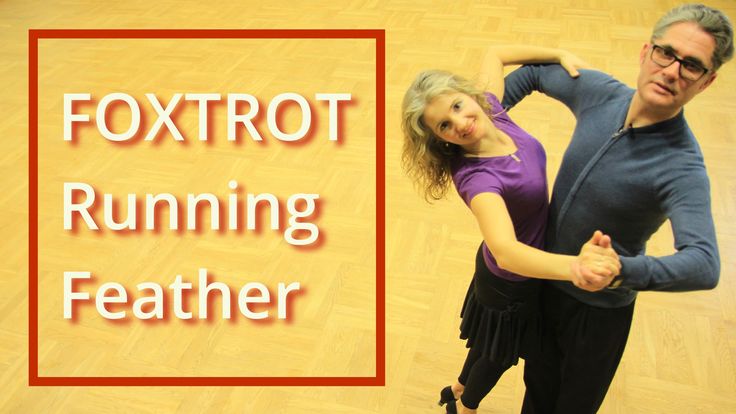 Usually this figure is preceded by a "feather" step diagonally to the center, and ends also with a "feather" step, but diagonally to the wall. Lady performs a quarter turn left to point 5 to be directly in front of her partner.
Usually this figure is preceded by a "feather" step diagonally to the center, and ends also with a "feather" step, but diagonally to the wall. Lady performs a quarter turn left to point 5 to be directly in front of her partner.
For Partner:
Starts moving diagonally towards the center and ends diagonally towards the wall.
1. Step forward with the left foot, turning the body to the left (slowly).
2. Step right foot to the side to the right, crossing the line of dance (quickly).
3. Continuing to turn on the ball of your right foot, take a step with your left foot to the side to the left and slightly forward - in the promenade position (quickly).
4. Step right foot forward into a promenade position diagonally to the wall (slowly).
Fig. An open telemark ending with a “pen. Pa partner and partner
5. Having turned the lady around a quarter of a turn, take a step with the left foot forward diagonally to the wall (quickly).
6. Step forward with the right foot to the lady's side (quickly).
7. Step forward with the left foot in line with the partner diagonally to the wall (slowly).
PDK for 1, 4, 7. The fourth and sixth steps in PDK. Climb at end 1, up at 2, 3. Descent at end 3. Rise at end 4, up at 5, 6. Descent at end 6. Lean left at 2, right at 5, 6. Perform a 3/4 turn at 1-3 and a slight turn of the body to the left at the end of the "pen" step.
For Partner:
1. Step back with the right foot, turning the body to the left (slowly).
2. Bring the left foot to the right, turning on the right heel, finish with the face along the line of dance (quickly).
3. Step right foot diagonally forward in promenade position, right shoulder leading; the toe of the right foot is pointing along the line of dance (quickly).
4. Step forward with the left foot, "crossing" the body, in the promenade position, start turning to the left (slowly).
5. Turn to the left until you are directly in front of your partner, step with your right foot to the side to the right and slightly back (quickly).
6. Step left foot back (partner on the side) diagonally to the wall (quickly).
7. Step right foot back (slowly).
PDK for 1, 4, 7. The fourth and sixth steps in PDK. Rise at end 1, up 2, 3. Descent at end 3. Rise at end 4, up 5, 6. Descent at end 6. Tilt right 2, left 5, 6. Perform 3/8 turn on steps 1, 2. Slight turn of the body to the left on the third step. 3/8 turn left in steps 4-7.
5. Top spin
The literal translation of this pa ("turn at the top") well reflects the essence of the movement - in a spiral. This variation is not only very enjoyable to dance, but also useful when the partner wants to avoid running into another couple. It consists of two turning steps back, which are performed after stopping the step forward with the right foot on the side of the partner. The top spin description below allows you to dance it in the corner of the dance floor. Usually this variation is preceded by points 1, 2, 3 of the impetus turn (slow, fast, fast) and 4, 5, 6 of the reverse turn (slow, fast, fast).
The top spin description below allows you to dance it in the corner of the dance floor. Usually this variation is preceded by points 1, 2, 3 of the impetus turn (slow, fast, fast) and 4, 5, 6 of the reverse turn (slow, fast, fast).
For Partner:
Starts in the corner of the court by following steps 1-6 as above. Finishes on the side of the partner (on the toes), the right leg is in front, the body is diagonal to the wall - the direction is the same. Then:
1. Step with the left foot behind the right, turning to the left, partner on the side (quickly).
2. Step right foot back diagonally to the wall with the body turning to the left (quickly).
The following three movements are identical to points 5, 6, 7 of the reverse turn:
3. Step with the left foot to the side to the left and slightly forward, the body along the new line of dance (quickly).
4. Step right foot forward diagonally to the center on the partner's side (quickly).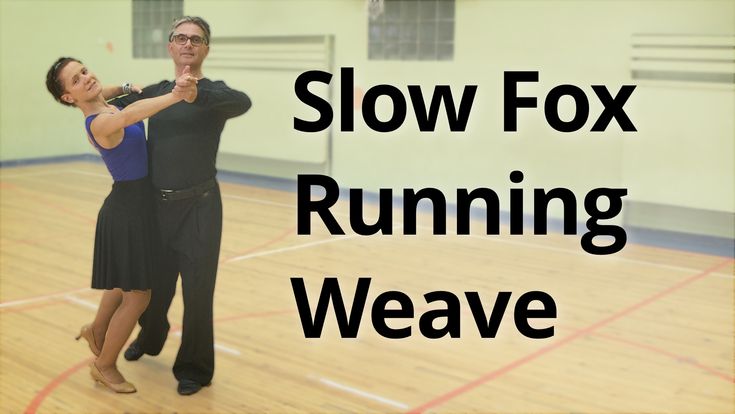
5. Step forward with the left foot in line with the partner diagonally to the center along the new line of dance (slowly).
PDK for 2, 5. Steps 1, 4 in PDK. Top 1-4. Decline at the end 4. Lean right 3, 4. Perform 1/8 turn between the sixth step of the reverse turn and the first step of the top spin; 1/8 turn between 1st and 2nd step; 1/4 turn between 2-5.
For Partner:
Starts in the corner of the dance floor, performing steps 1-6 as above: fast turn and steps 4, 5, 6 left turn. Finishes on the partner's left leg.
1. Turn the body to the left, take a step with the right foot forward to the left, "crossing" the left foot - on the side of the partner (quickly).
2. Step forward with the left foot against the line of dance, allowing yourself to turn to the left (quickly).
The following three movements are identical to points 5, 6, 7 of the reverse turn:
3. Step with the right foot to the side to the right with the back along the new line of dance (quickly).
4. Step left foot back diagonally to the center along the new line of dance, partner on the side (quickly).
5. Step right foot back in line with partner diagonally to center (slowly).
Fig. Top spin. Pa partner and partner
MPC by 2, 5. Fourth and sixth steps in the CAPD, top by 1-4. Decline at end 4. Tilt left 3, 4. Perform 1/8 turn between 2-3 steps and 1/8 turn between 3-4 steps.
Links and variations
1. Triple step - step "feather" - temple - final step "feather". Repeat.
2. Feather step - triple step - right turn.
3. The first three steps of the right turn - impetus turn - points 4, 5, 6, 7 of the reverse turn; finish diagonally towards the center and link to a move to the left, such as a telemark.
4. Step "feather" - telemark - final step "feather".
5. Step "feather" - open telemark - wing - telemark - final step "feather".
6. Points 1-3 of the right turn - impetus turn - points 4, 5, 6 of the reverse turn - top spin - triple step.
Video provided by Alexei Zhestkov's ballroom dance school
Ballroom dancing in the Kremlin! New set. Personal coaching advice. Friendly atmosphere
<< Back: Ballroom dancing
Maria Vasilevskaya "Dancing from A to Z" A book about dances for a wide range of readers
| We recommend that you look at the popular sections of the site myvaleology.com: | ||||||
| Version all4-8 | ||||||
Copyright © VZOJ 2022. All rights reserved. When reprinting or citing materials from myvaleology.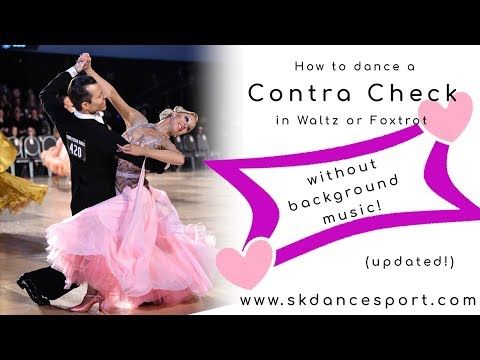 com, please link to myvaleology.com :
com, please link to myvaleology.com :
Healthy Lifestyle
Photo rights belong to their authors.
The site is powered by www.reg.ru hosting, discount for services using promo code 5084-7F0E-EABE-D693
In partnership with www.onlinetrade.ru (You immediately receive 300 Bonuses for purchases upon registration, 1 Bonus = 1 Ruble)
Slow Foxtrot Lessons
Foxtrot is a couples dance full of grace and elegance. In motion, the dancers “draw” intricate patterns on the parquet, and this spectacle captivates the audience. No matter how difficult the steps may seem at first glance, in fact, anyone can master them.
Slow foxtrot lessons, learning to dance.
Sports and dance club "Insight" in St. Petersburg invites adult students to classes. The teaching algorithm has been worked out for a long time and successfully. First, the dancers learn the most basic elements, and then connect the movements together and perform a coherent spectacular dance.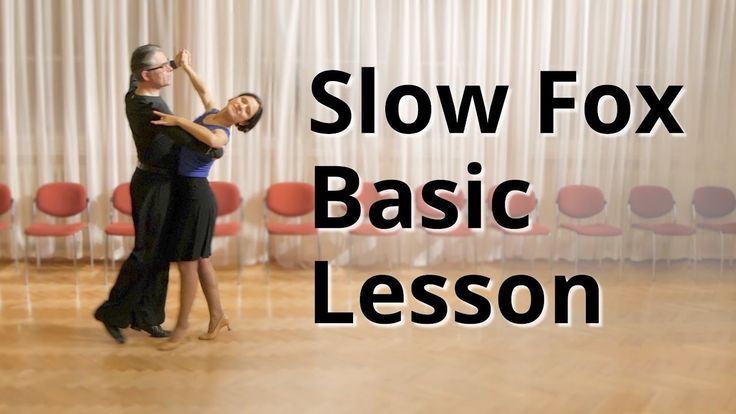
Even if you have never tried your hand at fast or slow foxtrot before visiting our club, you can easily learn this dance under the guidance of our highly qualified trainers. Classes are taught by ballroom dancing professionals who have participated and won in a huge number of tournaments and championships throughout their careers. They consistently climbed all the levels of mastery and, based on their own experience, understand how to help students repeat the same path. Their teaching talents will help you discover your own abilities.
Dancing in pairs, you will improve your coordination of movements, learn to feel and understand each other better. It is never too late to learn how to play the foxtrot, no matter how old you are or whether you have danced before.
Pair dances in a modern style demonstrate real miracles of choreography and plasticity. The foxtrot has become one of the best ways to express emotions in motion. The slow pace of the step, combined with smooth transitions, conveys an extraordinary aesthetic!
Foxtrot features
There are no strict rules in the dance, which are typical for ballroom performances.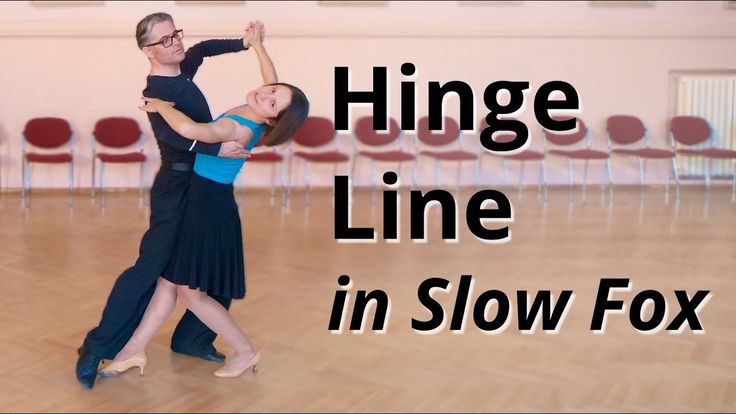 A creative approach to business gives a special appeal to any rhythm. In the foxtrot, you can move with straight feet and alternate fast steps with slow ones. In the 21st century, dance, which originated in the last century, is complemented by new techniques and techniques.
A creative approach to business gives a special appeal to any rhythm. In the foxtrot, you can move with straight feet and alternate fast steps with slow ones. In the 21st century, dance, which originated in the last century, is complemented by new techniques and techniques.
Varieties of foxtrot:
- slow tempo;
- fast rhythm;
- folk dance.
In the mixed version, participants are free to improvise. A couple can be in "free flight", observing the basic rules of rhythm. Foxtrot combines turns, triple steps, weaving, feather-finish and other tricks. In the dance, the partners "draw" the pattern together with elegant movements.
Slow foxtrot (slowfox) is ideal for lovers of the classics. All movements at this pace are filled with ease and grace. In a smooth rhythm, it is difficult to maintain balance and bring every movement to perfection. Our educators make the learning process easy and help couples prepare for epic performances.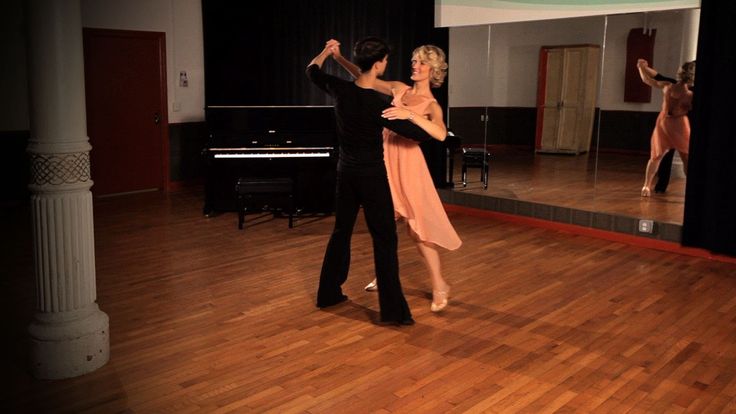
Fast dance (quickstep) attracts energetic people. This kind of foxtrot was created thanks to the best motives of jazz and Charleston techniques. Fast dance requires increased flexibility and special care from partners. Foxtrot is complemented by auxiliary movements:
- reversals;
- chassis;
- progressive steps.
Fast pace is accompanied by jumps and sharp swings. Demonstrate your dexterity to others and master new tricks of acrobatics! Our teachers will help you become a virtuoso in this matter.
Folk foxtrot (social) is characterized by freedom of movement, but retains several basic positions. The variant received a huge response from the public, who wanted to bring elements of originality into the usual rhythm of the dance. Folk dances are accompanied by unrestrained fun! The performance of the dance in this case is greatly simplified.
The special charm of the foxtrot
Numerous combinations and alternations of steps reveal the beauty of the refined style.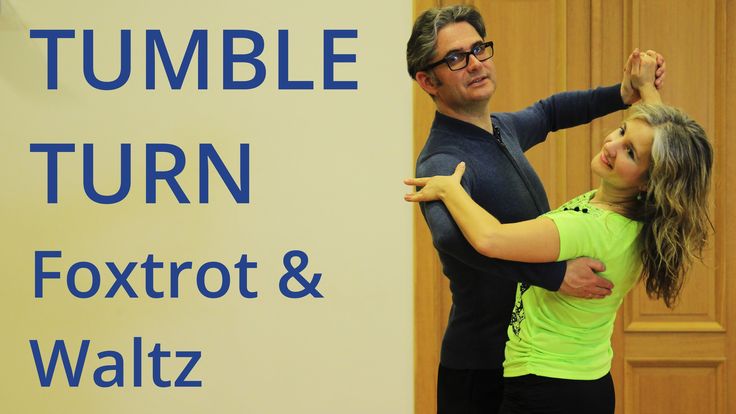 Every movement in the foxtrot looks natural and romantic. The dance is built on the musical time signature 4/4 and the tempo is from 28 to 52 beats per minute (depending on the rhythm).
Every movement in the foxtrot looks natural and romantic. The dance is built on the musical time signature 4/4 and the tempo is from 28 to 52 beats per minute (depending on the rhythm).
Partners can move in a gliding motion, imitating the steps of a fox or lynx. Foxtrot never leaves the audience indifferent! In the club "Insight" you can learn a skillful dance from scratch, without any preparation. The peculiar foxtrot technique delights children and adults.
Couples who perform in front of the audience show them the special charm of contemporary art. Foxtrot is not limited to standard tricks that can bore the audience. The dance embodies the partners' unsurpassed flexibility. Many of the movements characteristic of the foxtrot were later borrowed to build the slow waltz and hustle technique.
If you have long dreamed of being on stage and merging with the music as one, come to the Insight club. Experienced teachers (experts, winners of numerous awards) will teach you all the subtleties of dance movements.